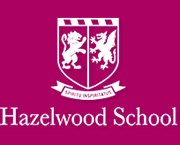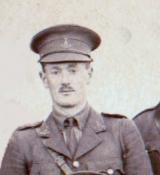
War Memorial
| Lieutenant Colonel Leslie Hanson MARRIAGE MC | |
|
2nd Battalion Yorkshire Regiment (Green Howards) attached to the 8th Battalion Machine Gun Corps Date of birth: 15th July 1892 Date of death: 2nd May 1935 Died aged 42 Unknown |

|
| Leslie Hanson Marriage was born at Coval Lodge, Chelmsford in Essex on the 15th of July 1892 the son of Jacob Marriage, a flour and corn merchant, and Sarah (nee Hanson) Marriage of The Quarry, Oxted in Surrey. He was educated at Hazelwood School until December 1904 where he was a member of the Choir. He went on to Marlborough College where he was in B2 House from January 1905 to Easter 1910 when he left school to prepare for the army. In the summer of 1910 he passed into the Royal Military College Sandhurst, where he was in A Company and passed out in 1911. He was commissioned as a 2nd Lieutenant in the Yorkshire Regiment on the 20th of September 1911 and was promoted to Lieutenant on the 2nd of September 1914. He embarked for France with his battalion on board the SS “California” on the 4th of October 1914, landing at Zeebrugge. He was engaged in the heavy fighting around Ypres and was wounded on the 29th of October during a German attack which forced the battalion on the right of the Yorkshires out of their trenches. In the subsequent counter attack “the enemy simply poured shrapnel into us and our casualties were heavy”. Despite this the Yorkshiremen forced the Germans back and gained another 200 yards of ground. During his recovery he was posted to Bisley. He served with the Motor Machine Gun Section from the 10th of August 1915 and was promoted to temporary Captain on the 8th of October 1915. He was wounded once again with shell shock in March 1916 and on his recovery he commanded a cadet battalion at home from November 1916 being promoted to Captain on the 1st of January 1917. He was appointed to the Egyptian Expeditionary Force in November 1917 and was present at the crossing of the Auja River with 52nd Division in December and in the fighting at Sinjil Ridge at Burj Badavile with 74th Division in March 1918. He was promoted to temporary Major on the 16th of February 1918. He was promoted to Acting Major and was appointed as Second in Command of the 74th Battalion, Machine Gun Corps on the 14th of April 1918 and returned to France with 74th Division the same month where he took part in the fighting from Albert to the Hindenburg Line in September 1918 and in the capture of Lille and Tournai in October and November 1918. He was promoted to Acting Lieutenant Colonel while in command of the battalion on the 29th of December 1918 and relinquished his rank on ceasing to command the battalion on the 22nd of March 1919. He volunteered for service in Northern Russia and joined the 8th (Special) Battalion Machine Gun Corps, which was formed at Dibgate, Shorncliffe on the 30th of March 1919 from a cadre of men from the battalion who had returned from France. The battalion moved to Crowborough Camp in Sussex on the 15th of April where they received orders to move to Russia on the 7th of May, They entrained for Newcastle on the 12th of May 1919 where they embarked on board HMT “Tsaritsa” and landed at Archangel on the 26th of May as part of the North Russia Relief Force. The battalion sailed up the Dvina River on the 9th of June 1919 where they were engaged in several actions before they re-embarked for England on the 27th of September and landed at Tilbury Docks on the 6th of October 1919. For his service in Russia he was awarded the Military Cross on the 11th of November 1919 “For distinguished service in connection with Military Operations in Archangel, North Russia.” He relinquished the rank of Acting Major on leaving the Machine Gun Corps on the 9th of January 1920 and returned to his Regiment. He retired from the army with the rank of Major on the 25th of September 1922, living at 69 Courtfield Gardens London SW2. He was married to May Helen (nee Smither) on the 10th of November 1926 at Claydon Suffolk and he died at 8 Bulstrode Street, Welbeck Street in Middlesex |
|
| Went on to Marlborough College |
Back